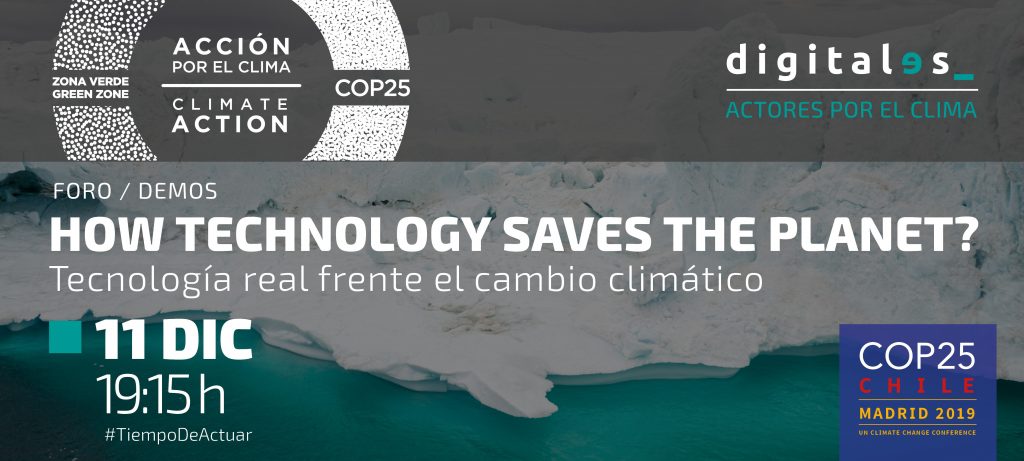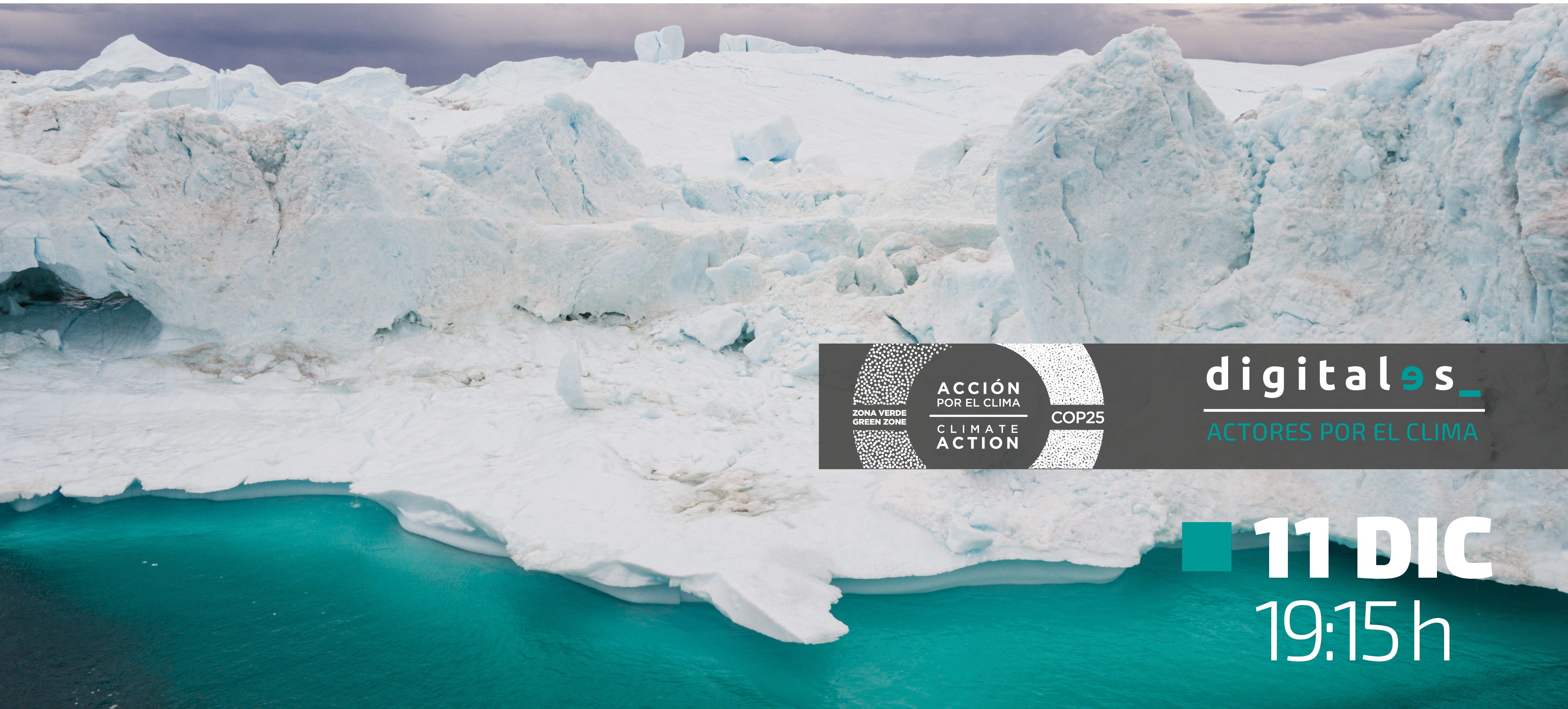02/12/2019
The Climate Summit, an annual conference attended by 200 countries to combat climate change, kicks off today in Madrid.
The event will take place from December 2 to 13 and will occupy up to 7 IFEMA pavilions. More than 113,000 square meters divided into a Blue Zone, more institutional and administered by the United Nations, and a Green Zone, for the participation of civil society. More than 25,000 people will participate.
During the summit, which will be attended by heads of government, ministers, NGOs, scientists, entrepreneurs and activist Greta Thunberg, all alternatives to limit global warming will be discussed. Hundreds of proposals will be on the table to address an issue that concerns the entire planet, but what are technology companies already doing about it?

One very important fact: the transition from 4G to 5G will reduce energy consumption per bit by 60%, which is a major breakthrough in terms of energy savings. But what else are technology companies doing to protect the environment? Here are some of the most interesting cases.
1. The City Council of Gandía (Valencia) has developed a project to become the first European city to manage its water supply over the Internet.
Thanks to NB-IoT technology, which allows meters to be connected in areas without coverage, the city will become a smart city capable of monitoring, controlling and managing water consumption through the network. This will allow the municipality to be more competitive, as well as more ethical, sustainable and efficient in the management of resources such as water.
Ultimately, this system reduces the volume of water consumed and allows for lower energy consumption, priorities included in points 6, 7 and 11 of the SDGs.
2. Thanks to the the ReefShark chipset, a processor that combines its adaptability to 5G standards, can be reduce base station power consumption by up to 64%. This technology developed by Nokia has also developed a liquid cooling system that can reduce a base station’s CO2 emissions by up to 80%.
In addition, the Finnish company points out the benefits derived from digitalization. Incorporating sensors into crops will enable farmers to improve soil quality, which will increase crop yields and reduce waste. And fleets of 5G-connected drones with computer vision technology will be able to monitor environmental conditions in the oceans, identifying pollution and plastic debris or locating oil leaks.
According to their calculations, information and communication technologies (ICT), including connectivity, could enable a 20% reduction in global CO2 emissions by 2030.
3. In reality, technology offers many ways to reduce energy consumption. One of them is through the use of data centers. Data centers are beginning to employ artificial intelligence to identify new energy efficiencies. IBX SmartView data center infrastructure monitoring (DCIM) software enables customers to monitor energy, mechanical and environmental conditions that can help them make better decisions to improve their energy efficiency.
In the Amsterdam data center, Equinix reuses the heat energy generated to provide heating for neighboring university buildings, and in one of the London buildings, indirect evaporative cooling, heat exchangers and rainwater harvesting units sustainably cover 85% of the cooling needs.
4. Another very useful technology in the fight against climate change is 3D printing. Their use not only reduces energy consumption, but also promotes a culture of recycling and greatly reduces emissions from the transport of goods.
HP has achieved very significant savings with this technology. By using it to manufacture parts for its HP Latex printers, it has replaced an aluminum part with a 3D-manufactured nylon part, achieving a 50% cost reduction, a 93% weight reduction and a 95% reduction in carbon footprint emissions.
5. Big Data is another of the technologies set to change the industry and as such will play a key role in environmental regulation. An example of this is the agreement signed between Telefónica and the Food and Agriculture Organization of the United Nations (FAO) for the use of Big Data to promote the development of rural populations in Latin America.
“Climate-Smart Livestock” is a project aimed at providing information and training to small and medium-sized livestock farmers in Ecuador on how to improve their livestock production while minimizing the impact of greenhouse gas emissions from their farms. To this end, mathematical models and advanced analytics are being used to generate relevant and individualized information for each livestock farm.
To publicize these and other actions, DigitalES will participate in the Climate Summit with its own space in the Green Zone. In addition, on the 11th, at 19:15h, under the title ‘How technology saves the planet?’ will present different cutting-edge technological projects that intervene and act for environmental sustainability and climate change. The exhibition will feature leading companies in technology and innovation that will explain how their projects help to act against environmental degradation.












